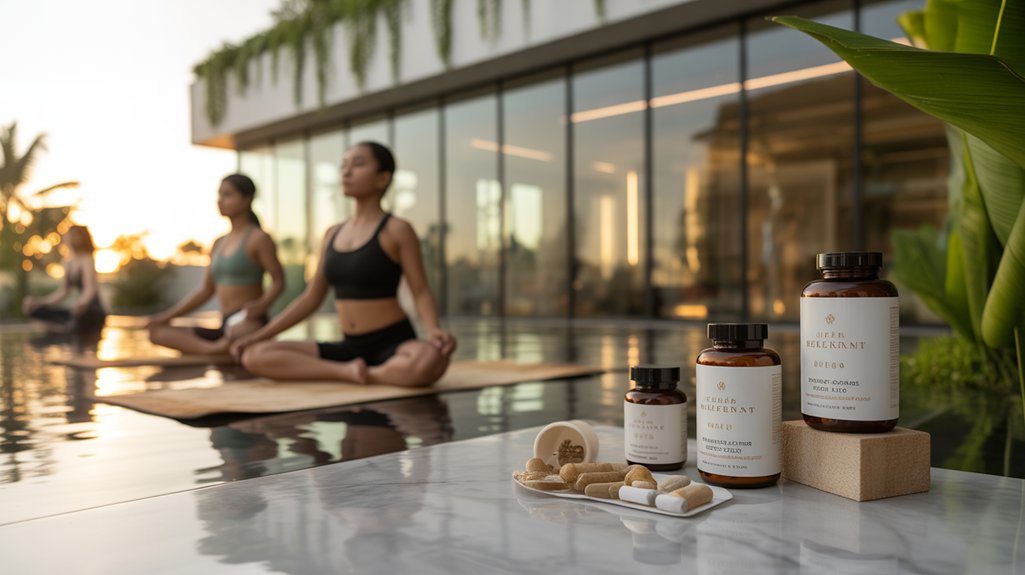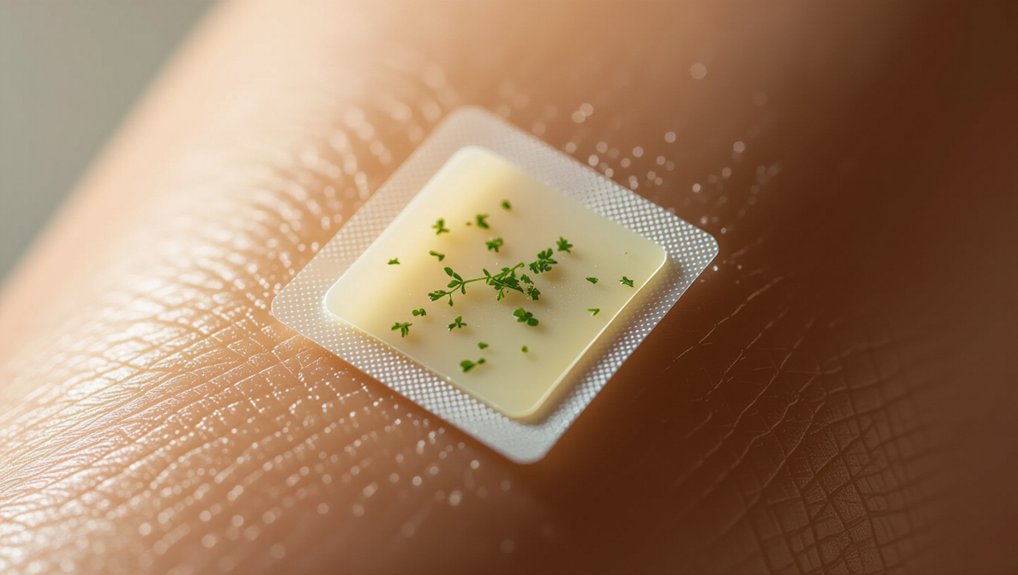You’ve likely noticed more Filipinos prioritizing their health lately, and there’s solid data backing this trend. A new forecast projects the Philippines’ health and wellness market will hit USD 23.17 billion by 2033, representing a robust 12.2% annual growth rate. This isn’t just about gym memberships or vitamin sales—it’s a fundamental shift in how an entire nation approaches wellbeing. What’s driving this massive transformation reveals something unexpected about the country’s economic future.
Market Valuation and Growth Projections Through 2033

The Philippines’ health and wellness market stands at a remarkable $8.2 billion as of 2024, and you’re witnessing an industry that’s positioned for exceptional expansion over the next decade.
You’ll see this market reach an estimated $23.17 billion by 2033, representing a compound annual growth rate (CAGR) of 12.2%. This dramatic growth trajectory reflects the country’s evolving consumer priorities and increasing disposable income.
You’re observing a shift where Filipinos prioritize preventive healthcare, fitness, and wellness products more than ever before. The market’s expansion encompasses multiple sectors including dietary supplements, fitness equipment, wellness services, and digital health platforms.
You can expect this upward trend to continue as health consciousness becomes deeply embedded in Filipino lifestyle choices.
Key Drivers Fueling the Philippines’ Wellness Industry Expansion

Behind this explosive growth, several powerful forces are reshaping how Filipinos approach health and wellness.
You’re witnessing a demographic shift as the country’s expanding middle class gains greater purchasing power and prioritizes preventive healthcare over reactive treatments.
Digital transformation has revolutionized access to wellness services. You can now book fitness classes, order organic foods, and consult healthcare professionals through mobile apps.
This tech integration has made wellness more convenient and affordable for millions.
The pandemic fundamentally changed consumer mindsets. You’re seeing Filipinos invest heavily in immunity boosters, mental health services, and home fitness equipment.
Government initiatives promoting universal healthcare and nutrition programs have also accelerated market adoption.
Rising urbanization creates demand for stress-relief solutions, while social media influences younger generations to embrace healthier lifestyles.
Impact of COVID-19 on Health Consciousness and Consumer Behavior

Among these transformative forces, COVID-19 stands as the most significant catalyst reshaping Filipino health consciousness.
You’ve witnessed unprecedented shifts in consumer priorities as the pandemic forced millions to confront their vulnerability. Health anxiety sparked immediate behavioral changes—you’re now seeing Filipinos actively seeking immunity-boosting supplements, investing in home fitness equipment, and prioritizing mental wellness services.
The crisis accelerated digital health adoption, with telemedicine consultations becoming mainstream.
You’ll notice consumers aren’t just reactive anymore; they’re proactive about preventive care. This fundamental shift from treatment-focused to prevention-oriented mindsets is driving sustained market growth.
Post-pandemic, you’re observing permanent lifestyle modifications.
Filipinos now view wellness investments as essential rather than luxury purchases, creating robust demand across nutritional supplements, fitness solutions, and holistic health services.
Rising Middle Class and Increased Disposable Income Effects

Sixty-three percent of Filipino households now classify as middle class, representing a dramatic economic transformation that’s fundamentally reshaping health spending patterns.
You’re witnessing this growing demographic prioritize preventive healthcare over reactive treatments, investing in premium vitamins, organic foods, and fitness memberships.
They’re allocating 15-20% of their discretionary income toward wellness products, compared to just 8% five years ago.
You’ll notice middle-class families aren’t just buying basic supplements anymore – they’re purchasing specialized probiotics, protein powders, and mental health services.
This demographic shift has created sustained demand for quality health products, driving market expansion beyond urban centers into secondary cities.
Their purchasing power enables consistent spending on wellness categories that lower-income groups consider luxury items, establishing health and wellness as essential household expenses.
Digital Health Platforms and Technology Integration
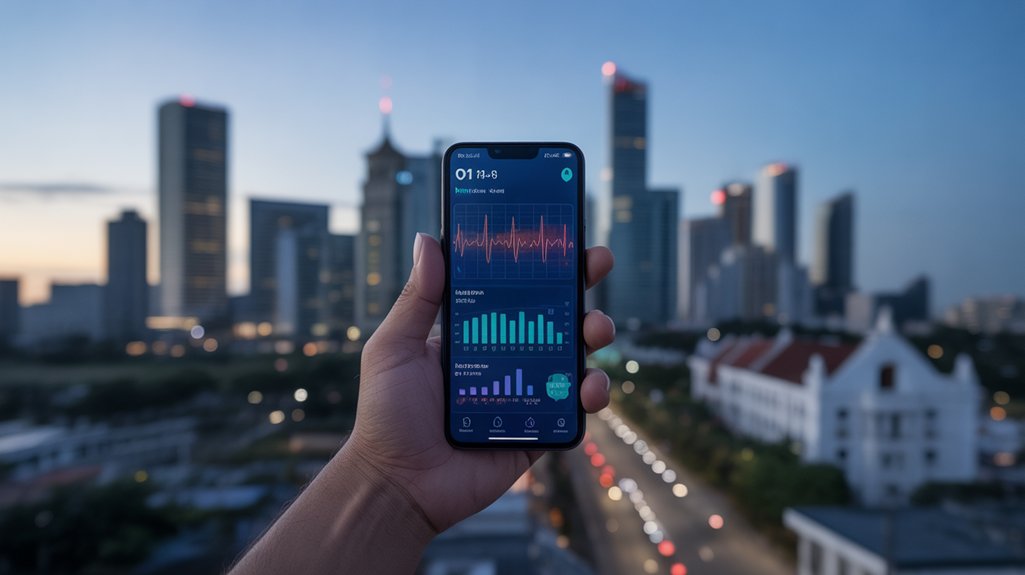
The Philippines’ digital health revolution is transforming how you access medical care, with telemedicine consultations increasing 400% since 2020. You’re now using mobile health apps to monitor chronic conditions, schedule appointments, and receive prescription reminders.
Healthcare providers are adopting electronic health records and AI-powered diagnostic tools to improve patient outcomes. You can access mental health support through digital platforms, breaking traditional barriers to psychological care.
Wearable devices help you track vital signs, sleep patterns, and physical activity, creating comprehensive health profiles. Remote patient monitoring reduces hospital readmissions while cutting costs.
The government’s push for digital healthcare infrastructure is accelerating adoption rates. You’re benefiting from reduced wait times, improved accessibility in remote areas, and personalized treatment plans powered by data analytics and machine learning technologies.
Government Healthcare Infrastructure Investments and Policy Support

While digital health platforms gain momentum, government healthcare infrastructure investments are simultaneously reshaping the Philippines’ medical landscape through ambitious funding initiatives and policy reforms.
You’ll see the Universal Health Care Act driving significant budget allocations toward hospital modernization, rural clinic expansions, and medical equipment upgrades across underserved regions.
The government’s targeting primary healthcare strengthening through increased PhilHealth coverage and streamlined reimbursement processes.
You’re witnessing major infrastructure projects including new specialty hospitals, upgraded emergency care facilities, and enhanced disease surveillance systems.
These policy-backed investments are creating substantial market opportunities for healthcare providers, pharmaceutical companies, and medical technology suppliers.
Public-private partnerships are accelerating development timelines, while regulatory reforms are improving healthcare delivery standards nationwide, directly contributing to the projected market growth trajectory.
Major Market Segments: Fitness, Nutrition, and Alternative Health Solutions

Diversification across fitness, nutrition, and alternative health solutions is creating a robust ecosystem that’s capturing Filipino consumers’ evolving wellness priorities.
You’ll find fitness centers and boutique studios expanding rapidly in urban areas, while digital fitness platforms are reaching remote communities.
The nutrition segment’s experiencing explosive growth through functional foods, dietary supplements, and organic products tailored to local tastes and nutritional needs.
Alternative health solutions are gaining significant traction as you increasingly seek holistic approaches.
Traditional Filipino healing practices are being modernized and integrated with contemporary wellness technologies.
You’re embracing everything from herbal supplements and aromatherapy to meditation apps and wellness retreats.
This multi-faceted approach ensures you have diverse options to address your specific health goals, creating multiple revenue streams that strengthen the market’s overall resilience and growth potential.
Competitive Landscape and Emerging Market Players
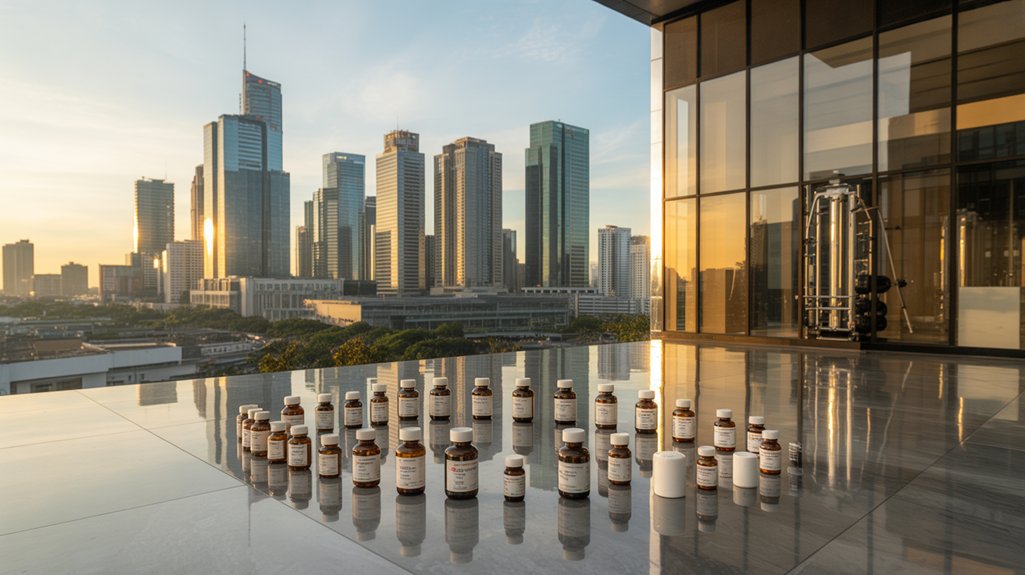
As established wellness giants face pressure from innovative startups, you’re witnessing a dynamic shift in the Philippines’ health and wellness competitive landscape.
Traditional players like Mercury Drug and Watsons maintain strong pharmaceutical and supplement distribution networks, while local gym chains such as Fitness First and Gold’s Gym dominate physical fitness spaces.
However, you’ll notice emerging digital-first companies disrupting these sectors. Telehealth platforms like KonsultaMD and HealthNow are capturing significant market share through convenient online consultations.
Fitness apps like Anytime Fitness Philippines and homegrown wellness brands are leveraging social media marketing to reach younger demographics.
You’re also seeing international players like GNC and Herbalife expanding their Philippine presence, while local organic food producers and supplement manufacturers gain traction through e-commerce platforms and direct-to-consumer strategies.
Regional Position Within Southeast Asia’s Wellness Economy

When compared to its Southeast Asian neighbors, the Philippines occupies a mid-tier position in the region’s $127 billion wellness economy, ranking fourth behind Indonesia, Thailand, and Singapore in total market value.
You’ll find the country’s wellness sector growing at 8.2% annually, outpacing regional averages but trailing Thailand’s tourism-driven wellness boom and Singapore’s premium medical tourism market.
The Philippines’ competitive advantages include lower operational costs, English proficiency, and a growing middle class driving domestic demand.
You’re seeing increased investment in wellness infrastructure, particularly in Metro Manila and Cebu.
While the country hasn’t reached Thailand’s wellness tourism dominance or Singapore’s high-value medical services, its expanding digital health platforms and spa industry position it as an emerging regional player with significant growth potential.
Investment Opportunities and Business Implications for Stakeholders
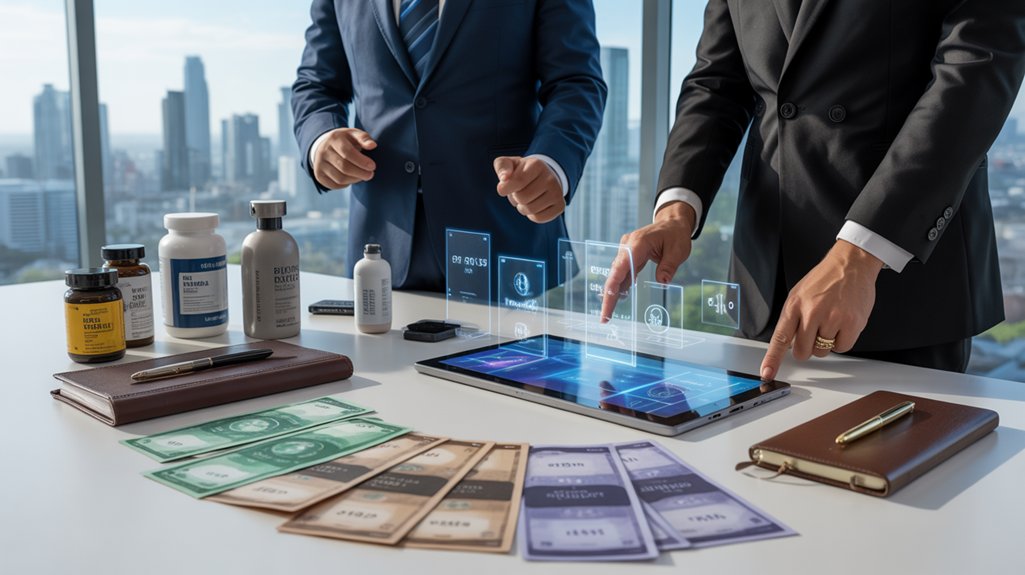
Given the Philippines’ emerging position in Southeast Asia’s wellness economy, you’ll discover multiple high-growth investment sectors offering attractive returns for both domestic and international stakeholders.
You can capitalize on digital health platforms, as telemedicine adoption accelerates across the archipelago’s dispersed islands. Fitness franchises and boutique wellness centers present lucrative opportunities in urban markets like Manila and Cebu.
You’ll find significant potential in nutraceuticals and organic food production, leveraging the country’s agricultural strengths. Medical tourism infrastructure development offers substantial returns, particularly in specialized treatments and wellness retreats targeting regional visitors.
Technology integration presents another avenue—you can invest in AI-powered health monitoring systems and wellness apps tailored for Filipino consumers. Strategic partnerships with local healthcare providers will accelerate market penetration and regulatory compliance.
Conclusion
You’re witnessing the Philippines emerge as a wellness powerhouse, with the market set to triple by 2033. You’ll find unprecedented opportunities across digital health platforms, fitness solutions, and preventive care services. As the middle class expands and health consciousness grows, you can’t ignore this 12.2% annual growth trajectory. Whether you’re an investor, healthcare provider, or wellness entrepreneur, you’re positioned to capitalize on Southeast Asia’s most promising health market transformation.
